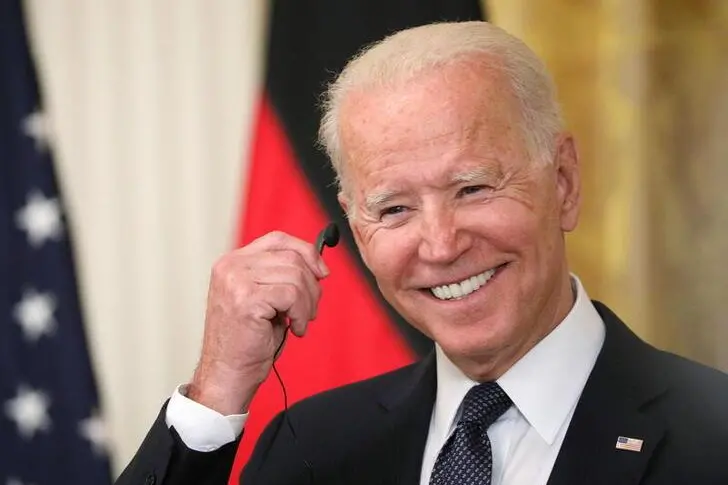PHOTO
While Joe Biden’s first overseas presidential trip was to Europe, it is becoming clearer by the day that his administration’s foreign policy priority is the Asia-Pacific region and the rise of China.
This core fact is highlighted again this week with Secretary of State Antony Blinken visiting India to meet Prime Minister Narendra Modi, External Affairs Minister S. Jaishankar and national security adviser Ajit Doval. At the same time, deputy Secretary of State Wendy Sherman has been travelling across the region, including Japan for trilateral talks with South Korea, and visits China on Sunday, while Defense Secretary Lloyd Austin will be in Singapore, Vietnam and the Philippines.
These meetings, and the score of previous visits to the region by top US administration officials, are a clear statement of intent. China is the closest to a peer competitor the US has faced in 30 years since the collapse of the Soviet Union, and the president appears to have decided to make the challenges (and potentially opportunities) this will bring central to his foreign policy.
Amid the swirl of US activity in Asia-Pacific, it is Blinken’s inaugural trip to India on Tuesday and Wednesday that is the most significant. This is reflected in the wide-ranging agenda, including planning for this autumn’s “Quad” meeting of Biden, Modi, Japanese Prime Minister Yoshihide Suga and Australian Prime Minister Scott Morrison; the India-Chinese border standoff in Ladakh; security in Afghanistan and Pakistan; and coronavirus vaccine distribution across Asia-Pacific.
During China’s rise since the end of the Cold War, the US-Indian relationship has improved significantly — and on a broadly bipartisan basis, under Democrat Bill Clinton, Republican George W. Bush, Democrat Barack Obama, Republican Donald Trump, and now Democrat Joe Biden.
Washington’s growing perception of New Delhi is that of a growing regional counterweight to Beijing, and a broader regional ally. To be sure, there remain some irritants, including US threats to levy sanctions if India continues to buy Russian military equipment. Moreover, many in Washington are concerned by the significant rise in the US goods and services trade deficit with India in recent years, and continuing delay in securing a US-India free trade deal, which Donald Trump pushed hard for.
Nevertheless, this frustration is superseded by the sizeable support across the political aisle in Washington in favour of a stronger US-India relationship driven by the perceived strategic rationale for partnership. In a landmark decision in 2016, Washington declared New Delhi a major US defense partner and signed the Communications Compatibility and Security Agreement, underpinning greater counterterrorism and defence cooperation, which Defense Minister Nirmala Sitharaman claimed elevated relations “to unprecedented heights.”
This has led to Washington and New Delhi forging much closer military ties, including joint naval exercises in recent years with not just the Quad powers of Japan and Australia, but also non-Asia Pacific powers such asFrance. This week, Blinken will sign a range of security-related agreements, which include giving India access to sensitive US satellite data to improve targeting of missiles and drones, underlining that US-India security deals have grown massively from close to zero in 2008 to an estimated $20 billion today.
Beyond security, the two countries would also like to agree on a trade deal, which would be a key prize for much of the US business community given the Indian mass market of more than 1 billion consumers.
Washington is New Delhi’s second-largest trading partner after Beijing, and trade in goods and services grew to about $142.6 billion in 2018 from $11.2 billion in 1995. While this growth is largely celebrated, one challenge is that the US goods and services trade deficit with India shot up from $2 billion to $25.2 billion during the same period. This has created tension; in 2019 Washington stripped India of its US special trade status, and the Modi team retaliated with tariffs on 28 categories of US goods.
In this troubled context, any deal may therefore need to wait until at least after November 2022’s US midterm elections, since the many compromises that will be needed from both sides would pose challenges for US Democrats defending control of both chambers of Congress. Given the current warmth in ties, however, both Biden and Modi sense an opportunity to reach an agreement before they themselves both have to go to the polls again in 2024, while in the meantime embedding their security alliance in the region.
- Andrew Hammond is an Associate at LSE IDEAS at the London School of Economics
Copyright: Arab News © 2021 All rights reserved. Provided by SyndiGate Media Inc. (Syndigate.info).












